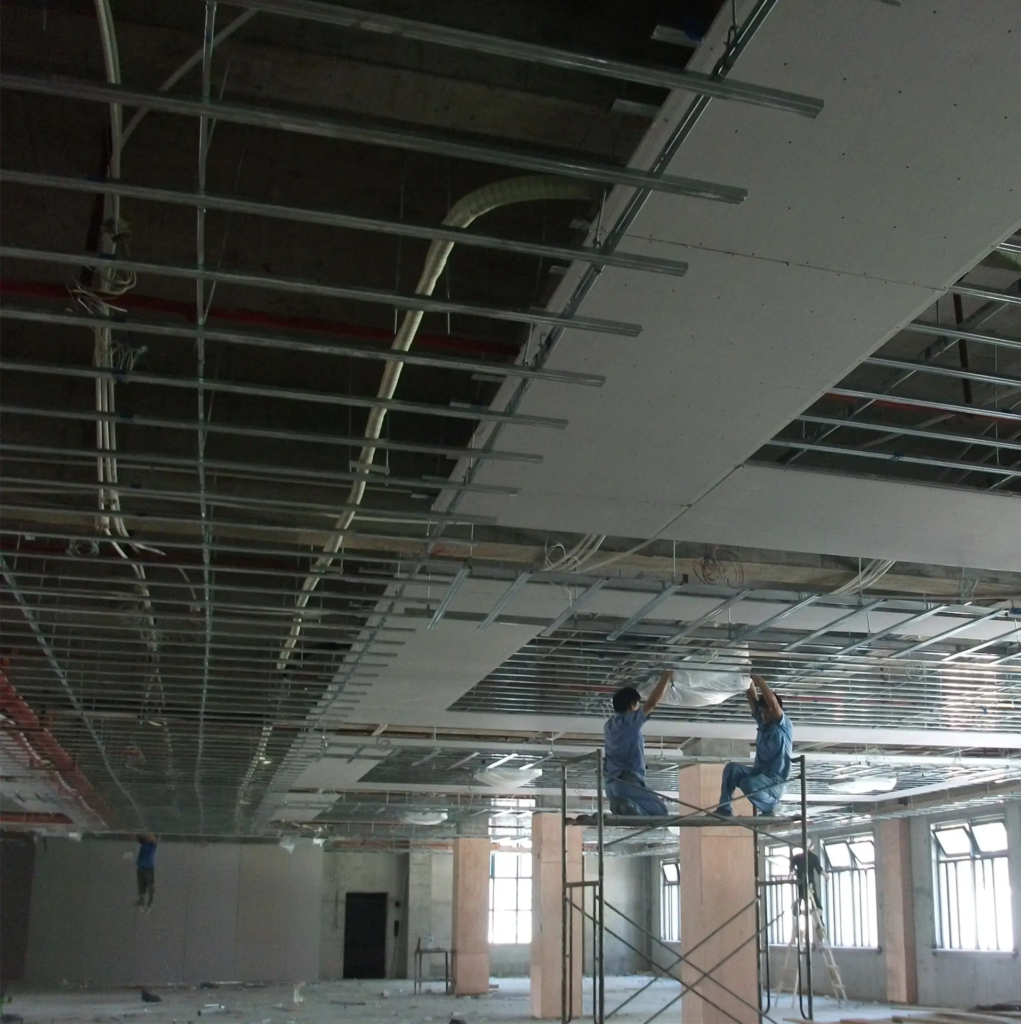
Chat about home improvements and exchange renovation insights. Hi all! Stay tuned for more renovation tips!
How did the light steel profile evolve?
The birth of light steel profiles dates back to the early 20th century when steel construction increased, but traditional wood remained for beams, roofs, wallboards, and other components. This shift introduced the idea of crafting these components into a single unit using innovative processing technology and lightweight materials such as hot-dip galvanized steel strips, significantly reducing building weight and enhancing construction efficiency.
The scope of application of light steel profiles has gradually broadened from initial large-scale structures such as industrial plants and warehouses to residential and commercial buildings and beyond. By the 1970s, light steel profiles were widely used in North America and Europe, becoming mainstream building materials.
In the 21st century, light steel profile technology and materials have been continuously upgraded, leading to new products such as high-strength and fire-resistant light steel profiles. These enhancements not only enhance the performance of light steel profiles but also extend their application range, making them an integral part of modern architecture.
Where does the lightweight steel profile apply?
In construction, light steel profiles are preferred. Primarily, as a novel building material, it dramatically enhances the quality of the building. With its lightness, ease of construction/dismantling, and robust anti-seismic performance, the light steel profile is optimal for a variety of building structures.
Secondly, the light steel profile is vital in interior decoration. It is used for suspended ceilings, partitions, floors, etc., offering a chic and functional decorative touch for indoor spaces. In addition, a light steel profile can craft various furniture and decorations, such as bookshelves, wardrobes, lamps, etc., enhancing people’s lives.
Finally, light steel profiles are widely used in industry. It is employed to fabricate various equipment and tools, such as structural parts for automobiles, aircraft, ships, etc., as well as parts for various mechanical equipment. The high strength and corrosion resistance of the light steel profile make it an ideal industrial material.
Home decor often uses a light steel profile. However, due to regional variations, consumers perceive it differently, often labeling it “inappropriate.” However, labeling light steel profiles as “inappropriate” in home decor does have a cause.
The light steel profile is “inappropriate” due to several factors.
Hindering construction: Unaccustomed carpenters face challenges using lightweight steel profiles. They are used to building roofs with wood profiles, and adapting to light steel profiles increases their construction difficulties. For skilled carpenters, the light steel profile presents a higher technical challenge than wood profiles, such as the Main Channel, Ceiling Carrier, and Hanging Hook. This complexity makes the original simple ceiling more complex.
Heightened construction risk: Light steel profiles require the use of a cutting machine, goggles, gloves, etc., indicating a safety risk. Carpenters can be vulnerable to hand injuries, making light steel profiles less suitable.
Diminished construction efficiency: While light steel profiles can enhance efficiency in large-scale use, in home decoration, they often cause construction delays. What could have been completed in two days now takes three or four days, significantly reducing efficiency.
Elevated construction costs: The use of light steel profiles initially increases material costs and subsequently increases overall costs due to increased construction difficulty and labor costs.
From our research, it is clear that light steel profile is not a real material problem, but various factors affect its use in home decoration. Suddenly, light steel profiles have gained popularity among many designers over the past couple of years, leading to an increased consumer understanding of their decorative benefits.
Recognized for their advantages in using light steel profiles, homeowners increasingly decorate directly with them, and more decorators have adopted light steel profiles as their standard. Why is the light steel profile “suitable”?
Light steel profiles have high stability: traditional wooden profiles in home decoration are easily affected by thermal expansion and contraction, causing cracks in the gypsum board. However, the light steel profile prevents such cracking.
Strong strength of light steel profile: Traditional wood profiles in ceiling strength must meet interior decoration standards, but they may eventually fall off. Light steel profile avoids this problem due to its construction process, which requires expansion screws for fixing.
Light steel profiles have good flatness: Traditional wood profiles struggle to achieve full flatness due to their ordinary plane. This problem does not arise with light steel profiles, as their inherent flatness ensures flatness even after leveling.
Light steel profile benefits:
- Lightweight: It is lighter than a normal wood profile, improving building load capacity.
- Strength: It is stronger than wood, supporting heavier loads.
- Fire resistance: Its fire resistance is superior to wood, preventing fires.
- Ease of construction: It is simpler to build than wood, reducing construction time.
- Flexibility: It can be cut, bent, etc., to suit various building needs.
The above analysis suggests that with the improvement of decoration quality, a light steel profile is increasingly popular for home use.
Light steel profile is a key construction material. It involves:
- Measurement: In pre-construction, we establish profile position and spacing through design drawings.
- Hanging hooks setup: Fix hooks to the ceiling for hanging profile support.
- Profile installation: Install the profile on the hook as required, secured with screws and nuts.
- Plasterboard installation: Attach the plasterboard to the profile, fixed with tapping screws.
- Soundproofing: Fill the gap between gypsum boards with soundproofing material.
- Batch putty: Apply putty to the surface of the gypsum board to enhance wall flatness and smoothness.
- Latex Paint: Brush latex paint on the putty surface for wall decoration.
Here’s how a light steel profile is built. We need to ensure the installation quality of the profile and the joint processing of gypsum splicing for top-notch construction.
Based on current market shifts, we anticipate that the future evolution of the light steel profile will feature these trends:
- Smart production: Light steel profile manufacturing will adopt a smart approach, using automated lines and intelligent controls for enhanced production speed and quality.
- Diverse applications: The range of light steel profiles will not be limited to traditional construction but will expand into transportation, energy, etc.
- Personalized customization: With the diversification of consumer needs, light steel profile production will evolve toward personalized customization to meet diverse customer needs.
- Globalization: With the advancement of globalization, the production and sales of light gauge steel profiles will become increasingly internationalized.
- Technological innovation: Technological innovation in the light steel profile will drive future growth through continuous research and development of new technologies to enhance product performance and quality.
- Green building: As an integral part of green buildings, the light steel profile will be more widely used in the future to promote the sustainable development of the construction industry.
The “inappropriateness” of the light steel profile is not entirely accurate. It is simply the inconvenience of installation and operation causing dissatisfaction among users, leading to its “inappropriateness”. In contemporary decor, light steel profiles are frequently used, making them increasingly suitable for domestic spaces.

